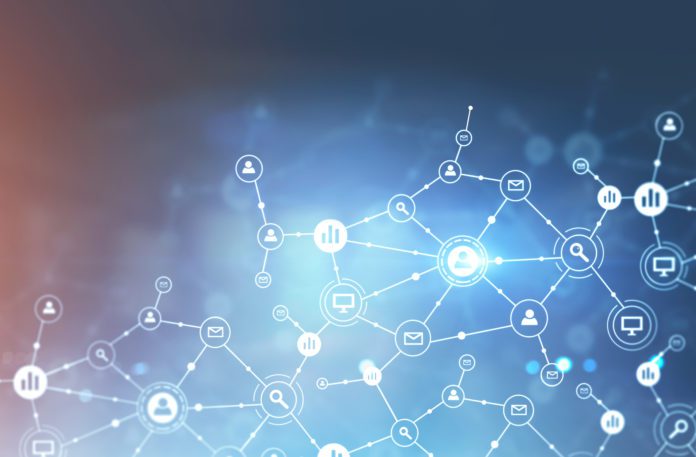Internet of Things (IoT) edge computing trends reflect the recent increase in the adoption of both edge computing and IoT among enterprises and individual consumers.
Gartner predicts that 75% of enterprise-generated data will be processed outside a traditional data center or cloud by 2025, and IDC reports that more than half of new enterprise IT infrastructure will be found “at the edge” by 2023.
In its report, Internet of Things (IoT) Market, 2021–2028, Fortune Business Insights estimates that the global IoT software market size was $309 billion in 2020. The research firm expects the market to grow to more than $1.8 billion by the end of 2028 — a compound annual growth rate (CAGR) of 25.4%. Fortune Business Insights attributes much of this growth to increased consumption of video and virtual reality content and the growth of IoT sensors.
IBM defines edge computing as “a distributed computing framework that brings enterprise applications closer to data sources, such as IoT devices or local edge servers.”
Closing the gap between applications and data sources allows for faster data processing, less latency, and better bandwidth. In an edge computing setup, data is delivered to users through a decentralized network of servers and data repositories located closer to the end user’s current geographic location.
This article will examine five current IoT edge computing trends driving growth in this sector.
See more: The Internet of Things (IoT) Edge Computing Market
Trends in Internet of Things (IoT) Edge Computing
1. Wearable IoT Popularity
Use cases such as medically issued health monitoring devices are driving much of the growth in the IoT edge computing sector. The wearables IoT category also includes a wide range of consumer applications, including smart clothing, wearable cameras, smart glasses and watches, and activity trackers.
One prominent example of a successful wearable IoT endeavor is a partnership between Google and the health wearables company Fitbit. Since 2018, Fitbit has used Google’s Cloud Healthcare API, and more recently, Google Distributed Cloud Edge, to integrate its data into health care applications.
Data from Fitbit wearables can be connected to electronic medical records (EMRs) to provide insights into overall health for end-users and their medical providers. Ideally, the data can be used to personalize care and spot potential health risks. Google VP of Healthcare for Google Cloud Dr. Gregory Moore said the partnership is part of the company’s vision to “transform the way health information is organized and made useful.”
2. Industrial and Agriculture IoT Usage
Industrial and agriculture professionals are benefitting from modern edge computing in several ways.
An edge computing approach can bring much-needed bandwidth to remote and dangerous locations in all kinds of weather. Farmers, for example, use IoT sensors and edge technology to track how much water is being consumed by livestock, monitor fertilizer effectiveness, analyze the quality of soil for planting specific crops, maintain tractors more efficiently, and other important indicators related to farming and agriculture operations.
Similarly, industrial and manufacturing companies are taking advantage of IoT and edge computing technologies. Industrial IoT enhanced by edge computing is being used at the company Texmark, for example, to add automation to its petrochemical refinery plant through its partnership with Hewlett Packard Enterprise.
The Texmark plant is outfitted with thousands of IoT sensors that send data to edge servers, where it is analyzed; should unexpected activity or downtime occur, the system creates a flag for intervention.
3. 5G Edge Computing and IoT
As 5G connectivity gradually grows to become the default for enterprises, IoT-driven data analysis has become much more robust, accurate, and quicker to process and access — the low latency of 5G can deliver sub-millisecond response times.
Sophisticated IoT applications like autonomous vehicle technologies rely on zero latency to ensure passenger safety. For example, obstacle avoidance is an action self-driving cars need to be able to perform virtually instantly. While 4G and LTE are unable to offer this level of immediacy, 5G — working with edge computing data — can deliver vital real-time insights.
The marked improvement in connectivity has spurred new investment in enterprise infrastructure, especially across manufacturing and health care sectors. In order to actually take advantage of all that 5G offers, companies often need to upgrade significant portions of their network architectures.
4. Low-Power Connectivity
Some IoT sensors and devices operate outside the range of local wireless networks or mesh networks and do not always have easy access to power. Operators have gotten by with cellular connectivity in these situations, which does not provide reliable coverage in remote or less populated areas. Low power connectivity options are linking difficult-to-reach IoT sensors to edge networks through radio technologies.
Companies like SigFox and many of those affiliated with the LoRa Alliance use low power, low bandwidth technologies to connect edge devices that don’t require high data rates, which includes millions of IoT sensors used for tasks like monitoring oil refinery operations thousands of miles out at sea.
5. IoT, Edge Computing, and the Customer Experience
Increasingly, customer experiences include digital components. Quick service and fast-food restaurants, for example, have moved to IoT kiosk-based ordering, where in-person customers place their orders on a touch screen instead of interacting with human workers. Edge computing reduces latency and ensures less downtime for these processes.
In the world of retail, speed matters. Deloitte Digital reports that a 100-millisecond improvement in mobile retail website speed increases customer conversion by more than 8%. And a recent Oracle report, “The Impact of Emerging Technology on CX Excellence,” revealed that 45% of organizations are already currently using IoT in a customer experience context.
Companies like Disney are using IoT and edge computing to power immersive experiences throughout their parks. As Forbes reports, Disneyland’s Rise of the Resistance attraction, for example, uses more than 15,000 IoT sensors to transmit data about performance along the ride’s track. Adjustments are made behind the scenes to keep rides and attractions up and running with minimal disruptions, improving the guest experience.
See more: Best IoT Platforms & Software



